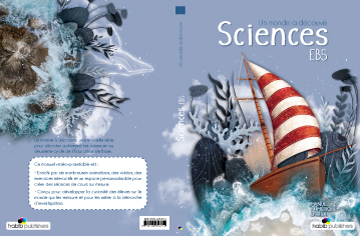
Un monde à découvrir, une nouvelle série pour aborder autrement les sciences au deuxième cycle de l’éducation de base.
Un manuel conçu pour développer la curiosité des élèves sur le monde qui les entoure et pour les initier à la démarche d’investigation. Le manuel est accompagné d’un cahier d’exercices à part entière. Le manuel vidéo-projetable est enrichi par de nombreuses animations, des vidéos, des exercices interactifs et un espace personnalisable pour créer des séances de cours sur mesure.
Le curriculum des sciences de la cinquième année de l’éducation de base, EB5, comprend cinq unités qui visent à découvrir le monde: les plantes et l’environnement, les animaux et l’environnement, l’homme et la santé, la terre et l’univers, la matière et l’énergie.
 English
English


